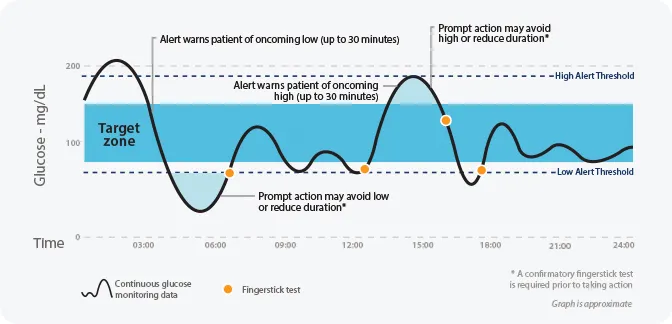Last week Journal of the American Medical (JAMA) published the first and only study on the benefit of continuous glucose monitoring (CGM) in patients with type 1 diabetes who are injected insulin several times a day.The study confirms the improvement in the glycemic levels of people who use continuous glucose monitoring.
The study called Diamond led by Roy W. Beck, MD, Ph.D., of the JAEB Center for Health Research, Tampa, Florida, and his colleagues randomly assigned 158 adults with type 1 diabetes that were using multiple daily injections of dailyInsulin and whose hemoglobin was 7.5.The continuous glucose monitoring device used in the study was the DEXCOM.
Continuous glucose monitoring with glucose measurements every five minutes, in addition to alertTraditional blood glucose tests that are carried out several times a day.
In this study we are talking about, 93 percent used continuous glucose monitoring six days.The average reduction of HBA1C from the beginning was 1.1 percent at 12 weeks and 1.0 percent at 24 weeks.
“Among adults with type 1 diabetes who used multiple daily insulin injections, the use of continuous glucose monitoring compared to habitual attention resulted in a greater decrease in the HBA1C level for 24 weeks.More research is needed to evaluate longer term effectiveness, as well as clinical results and adverse effects, ”wrote the authors.
In another study, Marcus Lind, MD, Ph.D., from the University of Gothenburg, Sweden, and his colleagues randomly assigned 161 individuals with type 1 and HBA1C diabetes of at least 7.5 percent treated with multiple daily injectionsof insulin to receive treatment with continuous glucose monitoring or conventional treatment for 26 weeks, separated by a 17 -week wash period.The objective of the study was to analyze the effect of continuous glucose monitoring on glycemic control, hypoglycemia, well -being and glycemic variability.
The researchers found that the average HBA1C was 7.92 percent during the use of continuous glucose monitoring and 8.35 percent during conventional treatment.Of the 19 other results that included psychosocial measures and various glycemic measures, six had statistical significance, favoring continuous glucose monitoring compared to conventional treatment.Five patients in the conventional treatment group and one in the continuous glucose monitoring group presented severe hypoglycemia.


